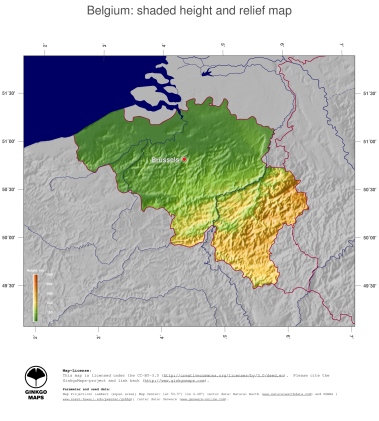Flanders was well known for its textile sector, and became a major exporter of textile goods. However it became outshined during the industrial revolution by the incredible peak of Wallonia’s economy.
While Wallonia’s economy grew, its Flemish counterpart started having slower growth rates in output and yielded decreasing levels of benefit. Its inflection point came when Wallonia’s economy started its downfall.
Flanders was able to adapt to change and technological evolution, and managed to take the reins of Belgian economy. Its rise to power began with the transition to Service economies. As strategic planning and communication infrastructure began taking importance in the business world, Flanders was considered as a key localization for trade.

This has to do with Belgian geography more than with the economic progress of its regions. Flanders is located in an area which favors the movement of people and goods. Its terrain is plane which allows for great terrestrial transport; its shore gives access to the North sea, and for that reason the region of Flanders has four of the most influential harbors in Western Europe (Antwerp; Ghent; Zeebrugge; Ostend).
The previous photo clearly shows that the region of Flanders is closer to sea level and less mountainous than the region of Wallonia, which geographically coincides with the Ardennes.

This strategic location has attracted foreign multinationals, something which has helped improve Flemish economy vastly. Since Belgium’s economy is focused on the production of semi-finished goods, Flanders’ main activities are: the chemical sector, the automobile sector, and the aforementioned textile sector.
IMAGES:
- Jacobsen, R., Willeghems, G., Gellynck, X., & Buysse, J. (2014, April). Figure 1. Retrieved from Research Gate: https://www.researchgate.net/figure/Map-of-Belgium-Flanders-is-the-northern-part_fig1_263285449
- Ginkgomaps. (n.d.). Belgium. Retrieved from Ginkgo Maps: http://www.ginkgomaps.com/maps_belgium.html
BIBLIOGRAPHY:
- Berentsen, W. H., Danta, D., Diem, A., Hoffman, G., Malmström, V., Poulsen, T. M., . . . ZumBrunnen, C. (2000). Bélgica. In W. H. Berentsen, D. Danta, A. Diem, G. Hoffman, V. Malmström, T. M. Poulsen, . . . C. ZumBrunnen, Europa Contemporánea: Un análisis geográfico (pp. 345-354). Barcelona: Ediciones Omega, S.A.

One thought on “1.5.2. THE RISE TO POWER OF FLANDERS”